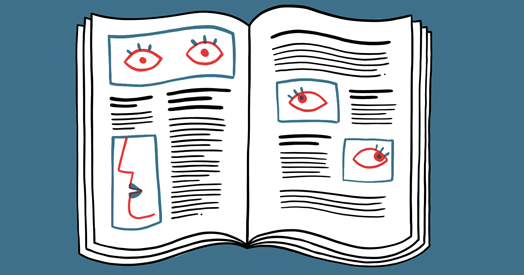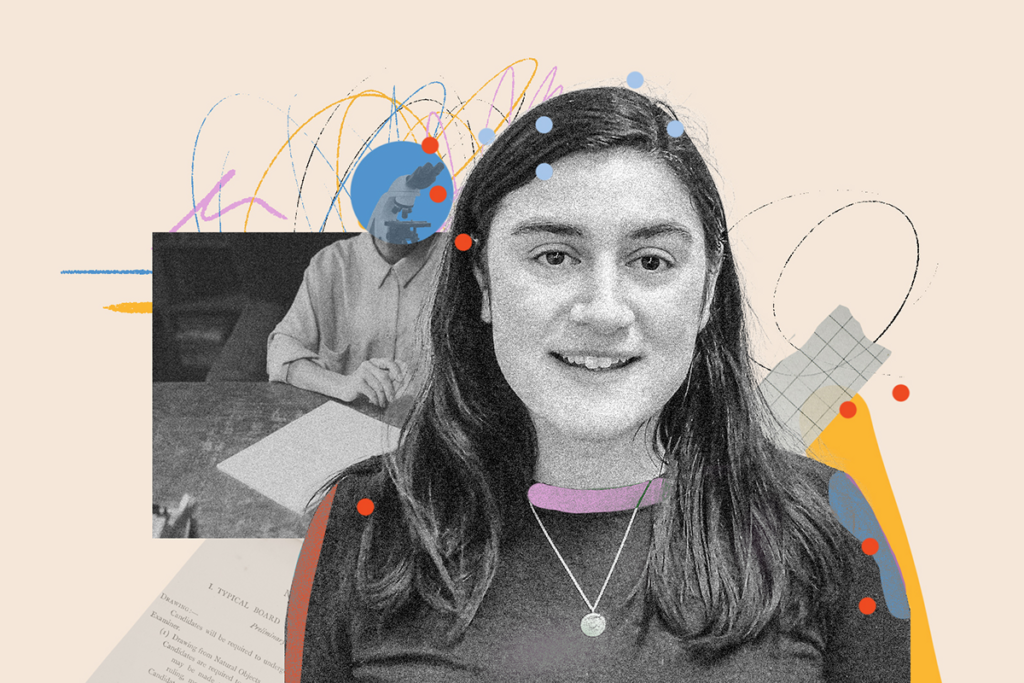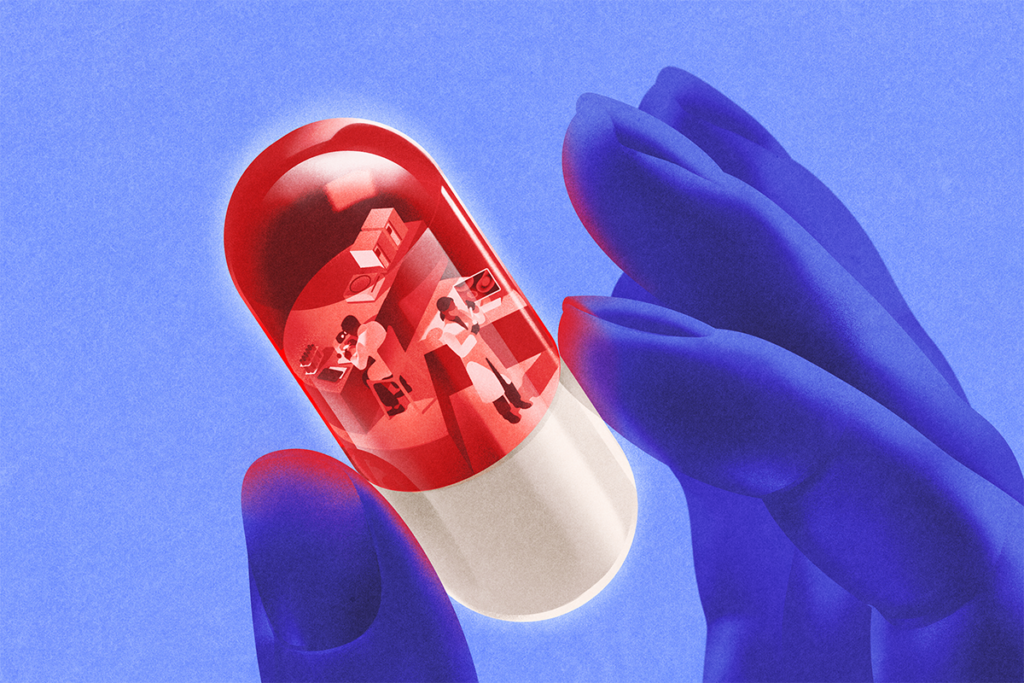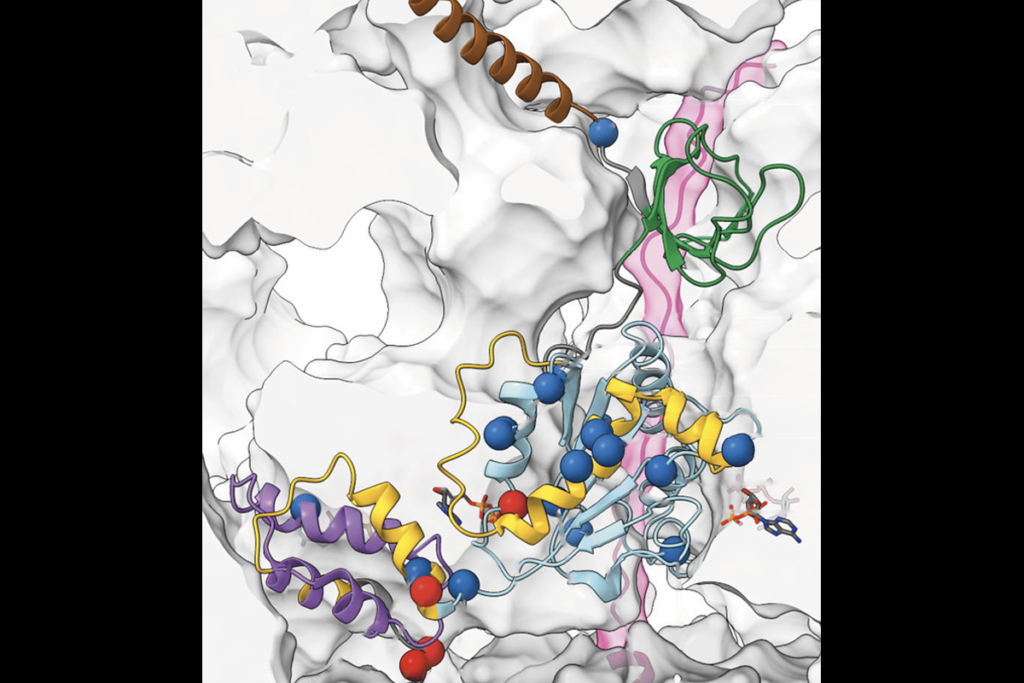Analysis offers new hope for failed fragile X drug
Eye tracking shows that mavoglurant, a once-abandoned experimental drug for fragile X syndrome, enters the brain and boosts social interest, says Elizabeth Berry-Kravis.

Five years ago, it looked like mavoglurant, an experimental drug for fragile X syndrome, had reached the end of the road. Studies showed that it boosts sociability and normalizes neuronal connections in mice. But two clinical trials in people with the condition found no changes in behavior.
In April 2014, Novartis, the pharmaceutical company that developed the drug, announced that it was ending the trials.
What the early analysis missed is that the drug may in fact improve social interest, based on a more objective measure — eye tracking to measure how long participants look at eyes in pictures of faces.
The eye-tracking findings show that mavoglurant enters the brain and suggest that it reaches its intended target, a protein receptor called mGluR5, according to a study published in January in PLOS One1.
We asked the study’s lead researcher, Elizabeth Berry-Kravis, how objective measures such as eye tracking can help guide the next generation of trials for fragile X syndrome and related conditions. Berry-Kravis is professor of pediatrics at Rush University in Chicago.
Spectrum: What led you to do this newer analysis, and what did you find?
Elizabeth Berry-Kravis: All the data in the trials were coming from family reports and questionnaires, and there were no objective outcome measures. We knew that these parent questionnaires could be variable, and we were concerned because the participants were from multiple countries with different languages and cultures. So we decided to measure something that’s innate to an individual’s behavior, or phenotype.
When people with fragile X syndrome look at pictures of faces, they avoid the eyes, much like they avoid eye contact in real life2. Their pupils also tend to dilate when they see a face, suggesting that they may find looking at faces to be overstimulating. So we included an eye-tracking and pupillometry task at the start and end of the trials.
Because the study was part of the trials, it had the full rigor of the trials. We had no idea which individuals got the drug and which got placebo until Novartis released the data a year after the trials ended. When we analyzed the data, it became clear that the participants who took the drug were looking more at the eyes, and for longer than those who got the placebo. Their pupils dilated more with mavoglurant than with placebo, which was surprising. It might mean that the drug made them more alert and attentive.
S: What do these results say about mavoglurant’s effectiveness?
EBK: This study shows that the drug is doing something in the brain, which wasn’t clear from the other outcome measures in the trials. That doesn’t necessarily mean that it is going to lead to clinically important improvement. We just know that it appears to be working where we want it to work.
S: Why do you think the trials failed?
EBK: In addition to the variability inherent in questionnaire responses, the trials had a substantial placebo effect. The effect was sufficiently large that it’s hard to imagine that a standard drug effect could overpower it. Participants were given placebo for the first month, with the idea of stabilizing the placebo effects and then looking at any advantage above that.
As it turned out, in one of the studies, the group that was eventually assigned to continue with the placebo happened to have twice as much placebo effect as the other participants; so we were dealing with a placebo group that was highly suggestible. These individuals continued to improve during the trial.
The other issue was that the trials themselves only lasted three months. When you’re looking at the effects of a drug on a developmental condition, you’re not necessarily going to see what it can do in that time frame. You’re not going to change 12 to 45 years of brain wiring in three months. Any brain changes related to the drug might take a long time to become apparent.
S: Did you suspect during the trials that mavoglurant does more than the results suggested?
EBK: Yes, we did. Every participant who was in one of the trials was given the drug for two to three years as part of an extension trial as the Novartis researchers analyzed the data. To this day, many families refer to that time as the participants’ “best years.”
In one case, there was a man who lived at a group home while taking the drug. He was working in the kitchen and doing a great job. The group-home staff called me a few months after the trial ended and said the participant was struggling to stay on task. They couldn’t understand why I would discontinue a medicine that had helped him so much. To my mind, that’s an unbiased observation, because they didn’t even know he was part of a trial. He has been on a number of other medicines since then and nothing has been quite as effective.
This new study shows that there may truly have been an improvement that corresponds to these stories we were hearing — but that it wasn’t picked up on because the trials used an extremely variable measure, had a massive placebo effect and only lasted for three months.
S: How do you envision the role of objective measures such as eye tracking in drug trials?
EBK: We would love it if these measures could eventually be used to predict a clinical response. Changes in behavior can take a long time to manifest, especially in processes such as learning and language. Ideally, we would know that if a marker such as eye tracking changes in a certain way, this person is eventually going to show a behavioral change. For this measure to serve as surrogate, we first have to prove that it is indeed related to a specific clinical outcome.
Markers such as this one could also help identify the participants who are most likely to benefit from treatment. A drug that treats only one-third of people with fragile X syndrome would still be a great drug. But because the syndrome is so rare, it is difficult to recruit enough participants in a trial to be able to see an effect in only a third of the group. If we show that certain individuals have a response to the drug through a biomarker, we could then use that biomarker to screen for responders before the trial begins.
S: What’s next for mavoglurant?
EBK: Our team is working on a trial in which we give the drug to participants in a language-learning program that’s effective in people with fragile X syndrome. We’re asking whether the drug enhances the speed of their language learning.
As part of the study, we’re using objective measures such as eye tracking as well as measures of the brain’s response to sound. The aim is to see whether these measures correlate with any of the language outcomes in the study, which would be a first step in making the case for these measures as markers of effectiveness.
References:
Recommended reading

Glutamate receptors, mRNA transcripts and SYNGAP1; and more

Among brain changes studied in autism, spotlight shifts to subcortex
Explore more from The Transmitter

AI-assisted coding: 10 simple rules to maintain scientific rigor

Frameshift: Shari Wiseman reflects on her pivot from science to publishing

